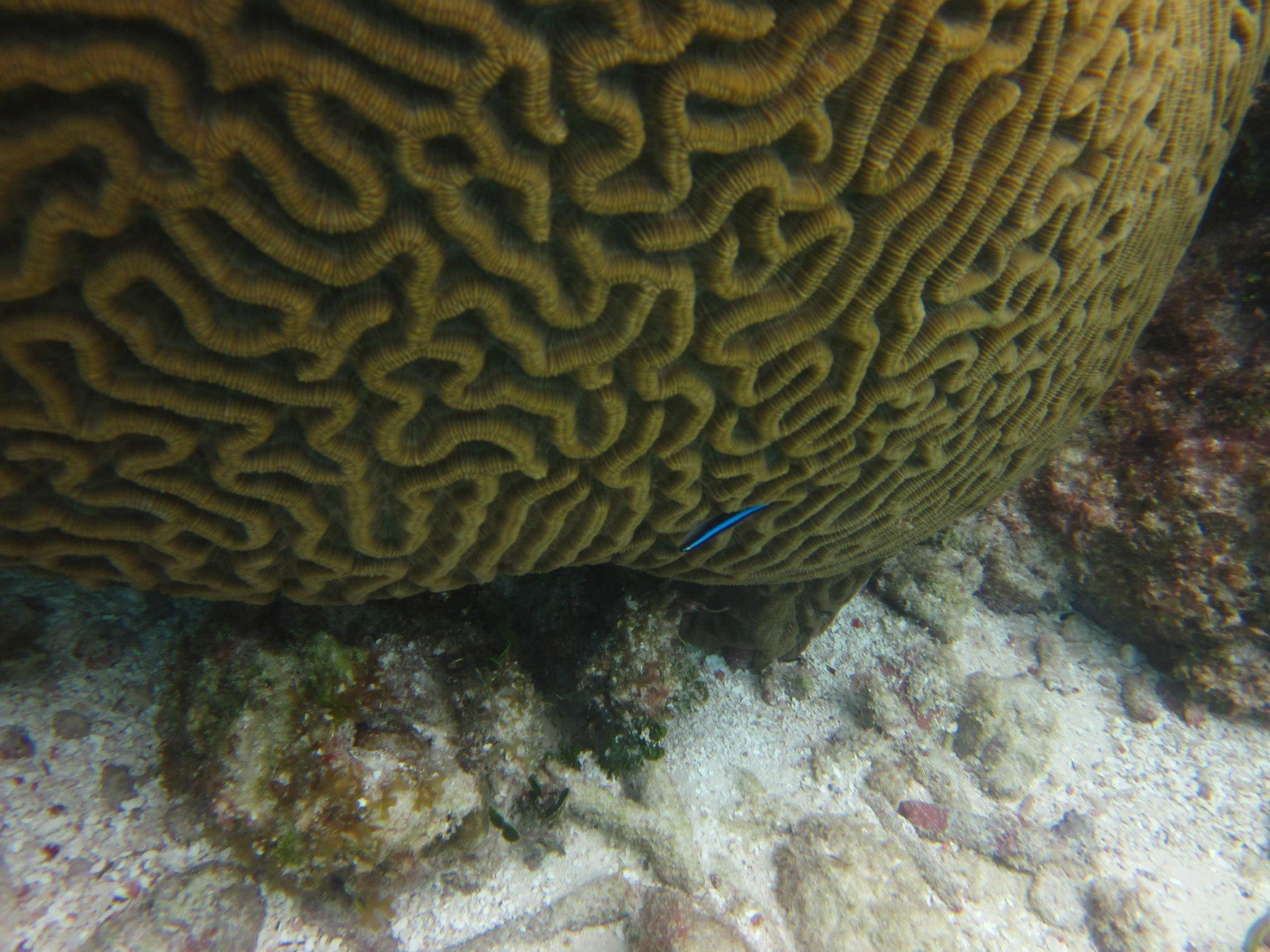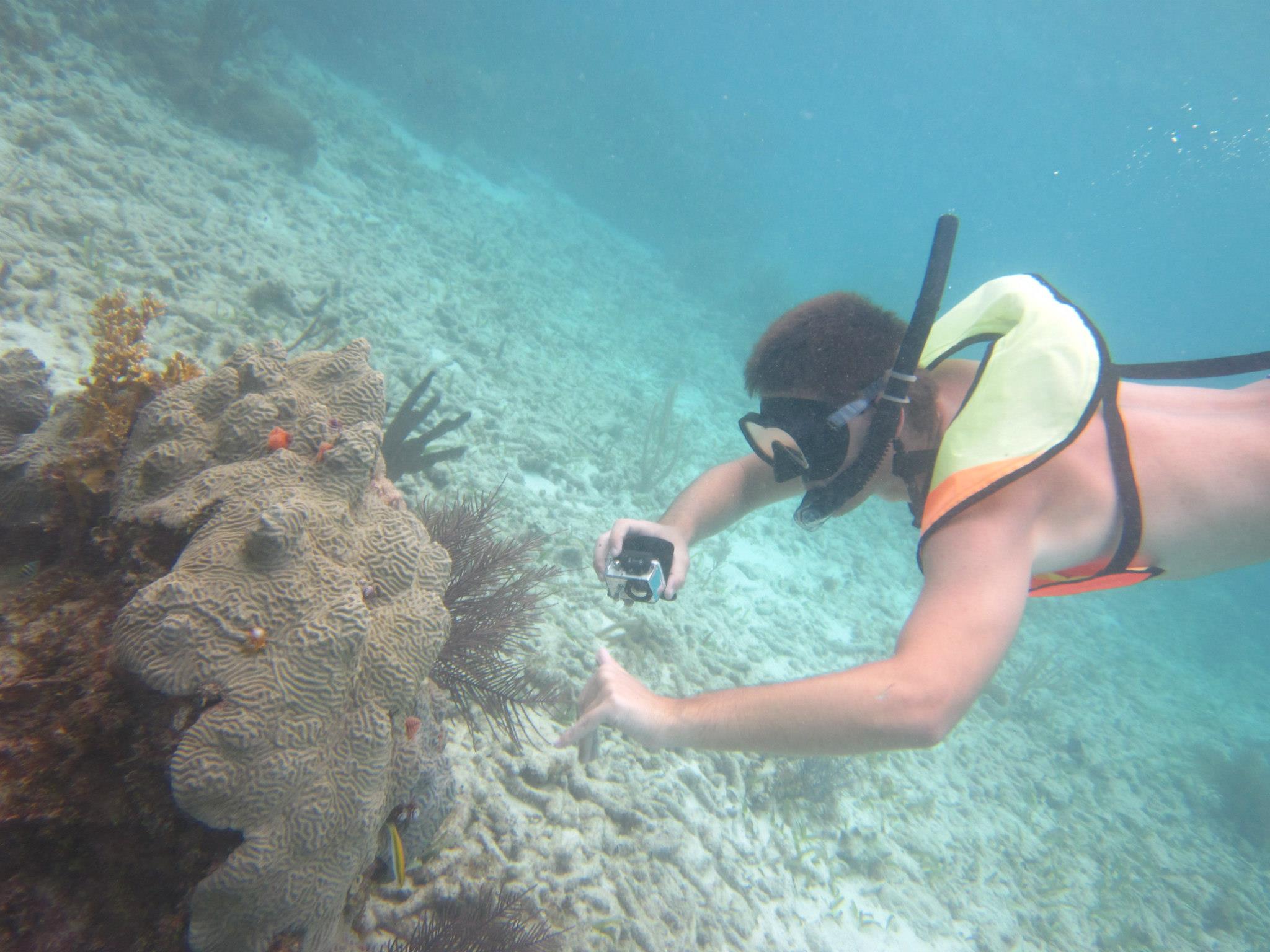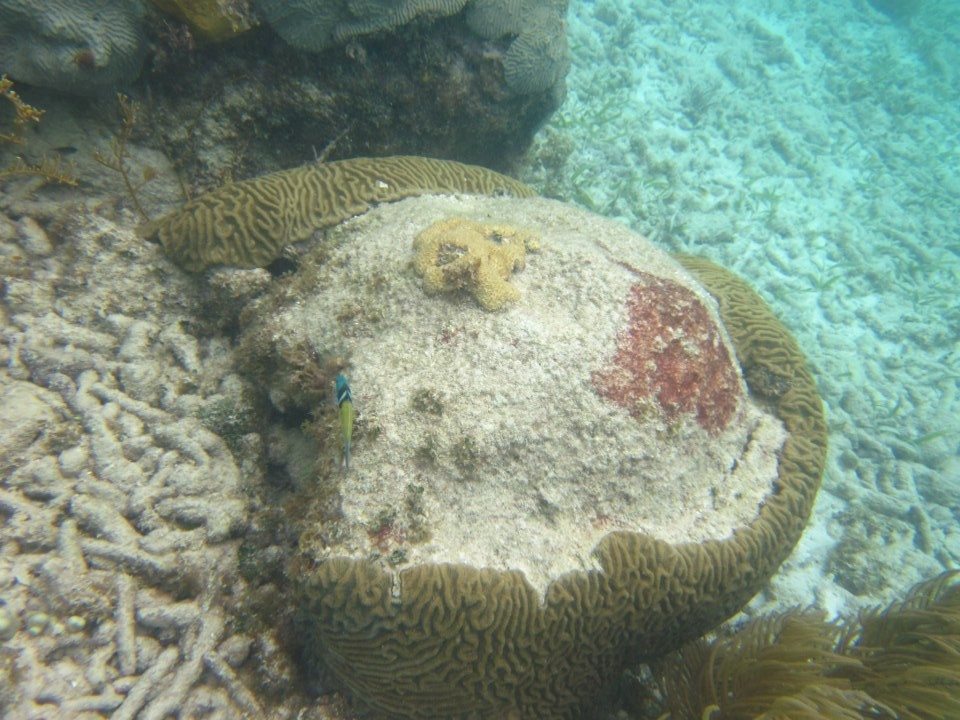Interactions
Diploria labyrinthiformis have a lot of interactions that happen in their habitat. They have a symbiotic relationship with zooxanthellae, which photosynthesize to give them food and in turn consume their waste. The have a lot of different organisms that live and grow on them. Brain coral also have a lot of predators, like the well-known parrotfish. Other predators include gastropods, echinoids, asteroids, pycnogonids, and polychaetes. Brain coral is considered to "form the reef backbone". All of these relationships and interactions are vital for brain coral to continue growing and changing, but what happens when one of these relationships disappear?
For years people have been seeing it happen and I got to see it first hand while snorkeling in Key Largo, Florida, coral bleaching. It is a huge problem today and is continuing to happen world-wide. Coral bleaching is when brain coral, or any other coral, loses its symbiotic relationship with the zooxanthellae that live under its polyps. The zooxanthellae perform photosynthesis and provide the different colors that you can see in brain corals. Without that zooxanthellae, the color starts to disappear in an effect that looks literally like "coral bleaching". The pigment that the zooxanthellae brought to the coral is gone and now the skeleton of the coral shows through its transparent coral tissue.
The reason for this symbiotic relationship to be lost has been narrowed down to a few causes. It can be caused by a drastic tempurature change, during el Nino or el Nina. It can also be caused by a change in the levels of salinity in the water. In some parts of the Atlantic, they find brain coral that contracts a disease that causes the zooxanthellae to be expelled from the coral. Other reasons are loss of sunlight from algae blooms and the zooxanthellae cannot photosynthesize to make food for the coral. Algae blooms can be caused when there is an overabundance of nutrients or not enough algae grazers. This is a map of the different heat stressors that lead to coral bleaching.
If the relationship is completely lost and the brain coral expels all of it's zooxanthellae, the coral will die. Fortunately if another change occurs where the brain coral can thrive again, they can start another growth of zooxanthellae and regain their health and color back.








